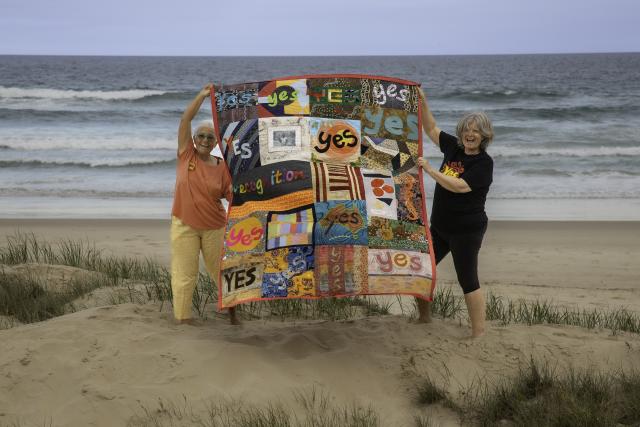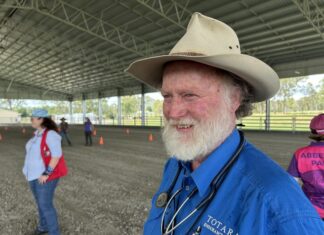
Noosa’s unique Yes quilt will soon be on a “goodwill tour” of the shire, with the local craftswomen who created it vowing to show it off at as many places as possible before Voice referendum polling closes at 6pm on 14 October.
The coordinator of the passion project, Marcus Beach mental health occupational therapist Manny Holmes, said local women had spent hundreds of hours designing and creating blocks for the quilt and assembling it.
“It’s just too beautiful, and too powerful, to be folded away in a drawer,” Ms Holmes said.
“With early voting for the Voice referendum already underway, we’ll be taking around to local markets, beaches and shopping strips to show it off to as many people as we can.
“I’m hoping that its gorgeous, gentle message of unity and hope may help spark some conversations about the Indigenous Voice to Parliament.
“I hope it inspires more people to vote Yes.”
Ms Holmes said the creators of the quilt also hoped to enter it in shows and display it at community locations after the referendum.
After Ms Holmes put out a call on her Instagram page in August, 14 women from across Noosa Shire and the Sunshine Coast responded by creating hand-crafted blocks for the quilt.
“I had no idea what to expect and have been overwhelmed by people’s passion to get involved,” Ms Holmes said.
Ms Holmes said she was determined to have the quilt finished by 14 October. She and a friend spent days wrestling with a long-arm quilting machine to assemble the two-metre long quilt.
“Although I’d seen all of the individual blocks, when I saw it completed, I was absolutely floored at how stunning it is to look at and how powerful its message is,” Ms Holmes said.
“Everyone else who has seen it has had the same reaction too.
“That’s why we’ve decided on the Yes quilt ‘goodwill tour’. As people appreciate and admire this beautiful object, I hope we can also have some positive conversations about constitutional recognition of Aboriginal and Torres Strait Islander peoples and the Voice.”
Ms Holmes said her work in mental health had convinced her that the Voice would support better health outcomes for First Nations people by giving them more say and utilising local wisdom.







